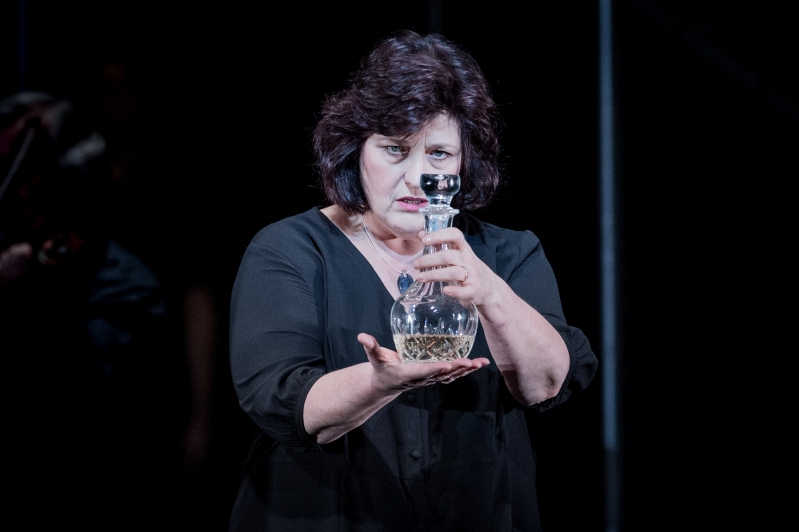
Welsh National Opera’s production of Le Vin herbé is back on OperaVision for you to watch. If you didn’t see it back in 2017 when we performed it, then chances are this isn’t an opera you may have just ‘come across’. There’s no music you will recognise from other forms of popular culture – it is a rarely performed piece, originally written as a secular oratorio (ie no set, costume or action) and not as a full-blown opera. Although, obviously, the story is well-known...
Frank Martin’s Le Vin herbé tells the story of Tristan and Isolde, just as Wagner’s more familiar opera does; but unlike Wagner, Martin went back to the medieval legend when writing it. Popular in the middle ages the Tristan legend then becomes incorporated into the Arthurian legend in the 13th century, with both King Mark and Tristan himself fabled as Knights of the Round Table. Tristan and Iseult are also said to be the inspiration for Lancelot and Guinevere.
Based on three parts of Joseph Bédier’s Le Roman de Tristan et Iseut (yes, there are many versions of all the names including Isolde, which Martin spells as Iseult): Le philtre, Le forêt du Morois, and La Mort, as well as a prologue and an epilogue. Bédier researched the origins of the many versions of the legend that reached across the world, with many obvious connections specifically to Celtic tales, and it is these that he focused on – just look at the three main characters: King Mark of Cornwall; his nephew Tristan; and Iseult, the daughter of the Irish King. Then of course there’s Tristan’s journey to Brittany where he marries the other Iseult, of the White Hands. All Celtic lands.

The basic premise being the tragedy of forbidden love, brought on by a magic potion, which ultimately leads to death and all-encompassing grief. So far so operatic. However, having forgone other variations of the tale, Bédier and therefore Martin’s interpretation, harks back to an enacted narrative in contrast to Wagner’s epic styling (and staging) and melodramatic, Tristan und Isolde. In keeping with this, the piece is written for a chorus of 12 (accompanied by seven strings and piano) with their role harking back to the Greek chorus – ie traditional narrators of a story.
In our production the whole WNO Chorus of over 30 singers are on stage, with several of them taking on roles – stepping in and out of the chorus-as-narrator group role to do so. The main roles are sung by Tom Randle (Tristan), Caitlin Hulcup (Iseult the Fair) and Catheryn Wyn-Rogers (Iseult’s mother); thereby breaking with the work’s original setting. The seven members of WNO Orchestra and pianist are joined by conductor James Southall centre stage too, on a simple set that emphasises the history of enacted storytelling. As designer April Dalton put it: ‘Martin never pretended that we were on a boat surging towards Cornwall, it was obvious we were experiencing a re-enactment or re-telling of this event.’
Director Polly Graham’s production gained us five star reviews and critical acclaim, as well as audience appreciation when we put it on as part of our Spring 2017 Season, and now you can watch it again from the comfort of your own home.



